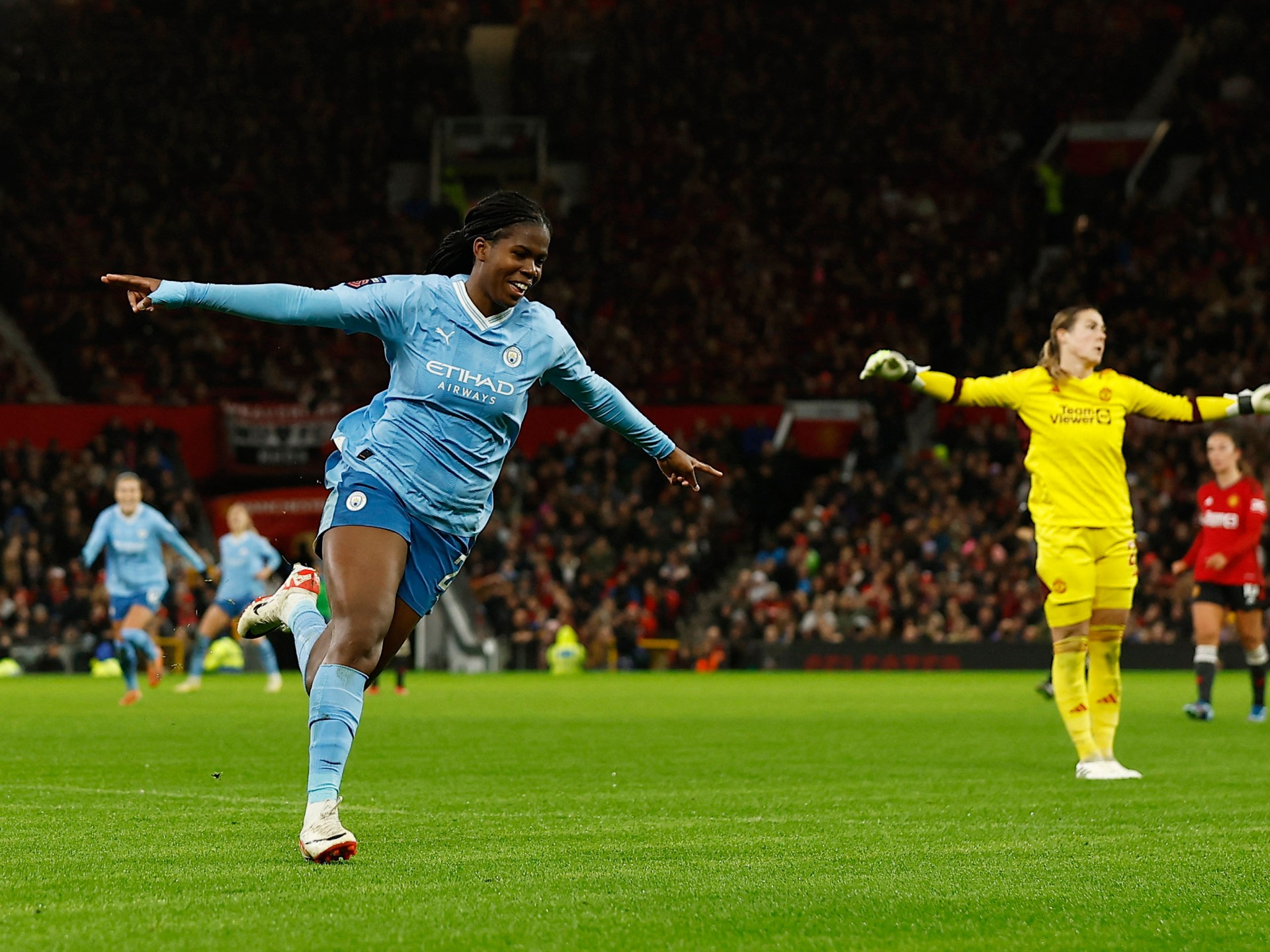
The Women’s Super League and Women’s Championship’s decision to break away from the English Football Association and run independently from next season will give women’s football new autonomy and play a crucial role in shaping its future, experts say, even if there are many pitfalls and uncertainties remain.
Last week, clubs from the top two divisions of women’s football in England announced that they had unanimously agreed to form a new organization (NewCo) to manage women’s professional football from the 2024/25 season.
The English Football Association has run the Women’s Super League since its inception in 2010, and the second-tier championship was added in 2014. However, in July 2022, the FA announced a desire for these leagues to no longer be owned solely by the FA and to be an independent entity.
NewCo, a current working title, will operate as an independent body, with all 24 Women’s Super League and Championship clubs acting as shareholders. The organization is led by CEO Nikki Doucet, a former investment banker and Nike executive.
Former FA director of women’s football Kelly Simmons said the creation of NewCo would give women’s leagues a “laser focus”.
“The FA was not the right choice in the long term because it is the governing body and the regulator and there are some commercial conflicts within that,” Simmons told Al Jazeera.
“We were concerned that if the women’s leagues simply merged into the men’s Premier League, it would not have a laser focus or an independent voice and may not be the highest priority.
“So we [at the FA] Everyone agreed that the best model would be to create a new company that had a clear focus, a board and an executive team solely focused on making the best decisions for women’s professional football.”
Simmons, who played a key role in the development of women’s football in England for three decades, believes NewCo will give the women’s game its own distinctive voice, independent of the men’s game.
“[The women’s game] has always been involved in the politics of men’s football and has not had the necessary voice to publicly say what is needed for women’s football and sometimes to put pressure on stakeholders,” added Simmons, who is now a sports consultant.
“That’s why I think it’s good that it now has its own voice, away from the FA.”
However, some experts have expressed concern that the new structure could repeat some of the problems affecting men’s football, and much remains unclear.
‘Right time’
Women’s football has seen one rapid rise in Englandaccelerated by the Success of the team at the 2022 Women’s European Championship on home soil.
NewCo’s launch comes just over three months after England played in the Women’s World Cup final in Australia.
Alex Culvin, head of women’s football strategy and research at FIFPRO, said the leagues’ decision to operate independently was timely.
“The FA in England probably took women’s football as far as they could. And that’s why I think the time was right in terms of the marketability of the game,” Culvin said. “The commercial value of the game is increasing… Women’s football in England has never been more attractive.”
Culvin, a former professional footballer who played for Everton, Leeds United and Liverpool, said an independent working structure would be more beneficial to the growth of women’s professional leagues in general.
“For many women’s professional leagues around the world, the country’s football associations manage the development of the league. And you find that there is a consolidation of power,” Culvin explained.
“So you run the league and the international team. And that’s why the consolidation of power can sometimes slow down the growth potential of women’s football, because how do you strategically prioritize one over the other?”
Culvin emphasized the importance of independent governance by citing the National Women’s Soccer League (NWSL), the top women’s league in the United States, which is owned by clubs.
NWSL is one of the top leagues in global women’s soccer and almost all US national players ply their trade there. The league is also commercially lucrative – so Data According to Sportico, the NWSL teams will collectively generate $112 million in revenue during the 2023 regular season. The WSL has been generated revenues of 32 million pounds ($40.2 million) in 2021-22.
“If you look at the NWSL … it has the opportunity to grow year after year. I think there has never been the independence and ability to strategically prioritize the growth of the women’s league in England. It’s important and I’m incredibly excited,” Culvin said.
The WSL now believes it can become the world’s first women’s soccer league with a revenue of one billion pounds ($1.24 billion) within a decade.
According to freelance journalist Nancy Gillen, the creation of NewCo, similar to the Premier League’s governance model, is intended to contribute to the rapid and sustainable growth of the women’s game.
“While the FA obviously wanted women’s football to grow, it is difficult for the organization to fully commit to this issue when it also has other commitments,” Gillen said.
“It is similar to when the Premier League broke away from the Football League and the FA in 1991/92 and gave it commercial independence. The Premier League is now one of the most successful and profitable sporting leagues in the world, so the Women’s Super League and Championship could potentially evolve into that.”
Simmons said the creation of a new company to run the leagues independently would also benefit women’s football in England.
“A very successful Women’s Super League helps the England team and I think one of the reasons why England have been so successful is because the players train and play every day with some of the best players in the world,” she said.
“On the other hand, a strong championship will help England because many young English talents need meaningful minutes in competitive games, perhaps when they are too young to advance to the Women’s Super League.”
Sales structure
The new company has not disclosed details of the structure of its governance, but Athletic reported Women’s Super League clubs receive 75 percent of the combined revenue from the two divisions and have full voting rights in commercial and broadcasting matters.
Culvin expressed concerns about the power grab by the top clubs.
“For me this is quite problematic because once again there is a consolidation of power among the larger clubs,” Culvin added. “I think it is important for this new foundation that there is no interest in undemocratic decision-making between the clubs.”
Simmons advocated for future revenue sharing with lower division leagues.
“At some point, as these revenues increase, there will need to be a renewed conversation about whether the money should flow further down the pyramid to the Women’s National League and the tiers below, just as it does in men’s football,” she said.
The Athletic also reported that 11 of 12 Championship clubs had rejected an initial agreement on voting rights on certain matters relating to the functioning of NewCo. But after the Women’s Super League clubs issued an ultimatum, the Championship clubs unanimously voted in favor of the deal.
Gillen, an expert on women’s football, said there was a risk of further disputes between the two divisions.
“I would really hope that any decisions are made to benefit both leagues, but there is always the possibility that the gap between the Women’s Super League and the Championship will widen,” she said.
Meanwhile, no financial fair play rules for the leagues have been announced.
As women’s leagues break away from the governing body, Simmons also stressed the importance of the FA maintaining a relationship with women’s football.
“The FA needs to think about how it manages and develops the relationship with the new entity to ensure there is a shared strategy, particularly in the areas of youth talent, talent development and club development,” she explained.
NewCo’s to-do list
Simmons said NewCo’s first major task would be to secure a new broadcast deal for the Women’s Super League, with the FA’s multimillion-pound deal with Sky Sports and the BBC set to expire next season.
Culvin suggested that NewCo should focus on setting new licensing criteria for clubs and also highlighted the need for a review of player remuneration to avoid a large pay gap between clubs.
The former defender added that the new company should also take into account Karen Carney’s recommendations to help improve the standards of women’s football in England.
Former player and pundit Carney conducted an independent investigation into women’s football in England last year and published the results in July. It set out recommendations aimed at capitalizing on the success of the England women’s team and providing a path to a successful and sustainable commercial future for the domestic women’s football team.
The UK Government has supported the recommendations and pledged its support to the FA and NewCo to fully professionalize women’s football.
“While I am encouraged by this innovative nature of the new Women’s Super League and Championship governance structure, I think there is not much information about how it will actually work in practice,” Culvin said.






Recent Comments